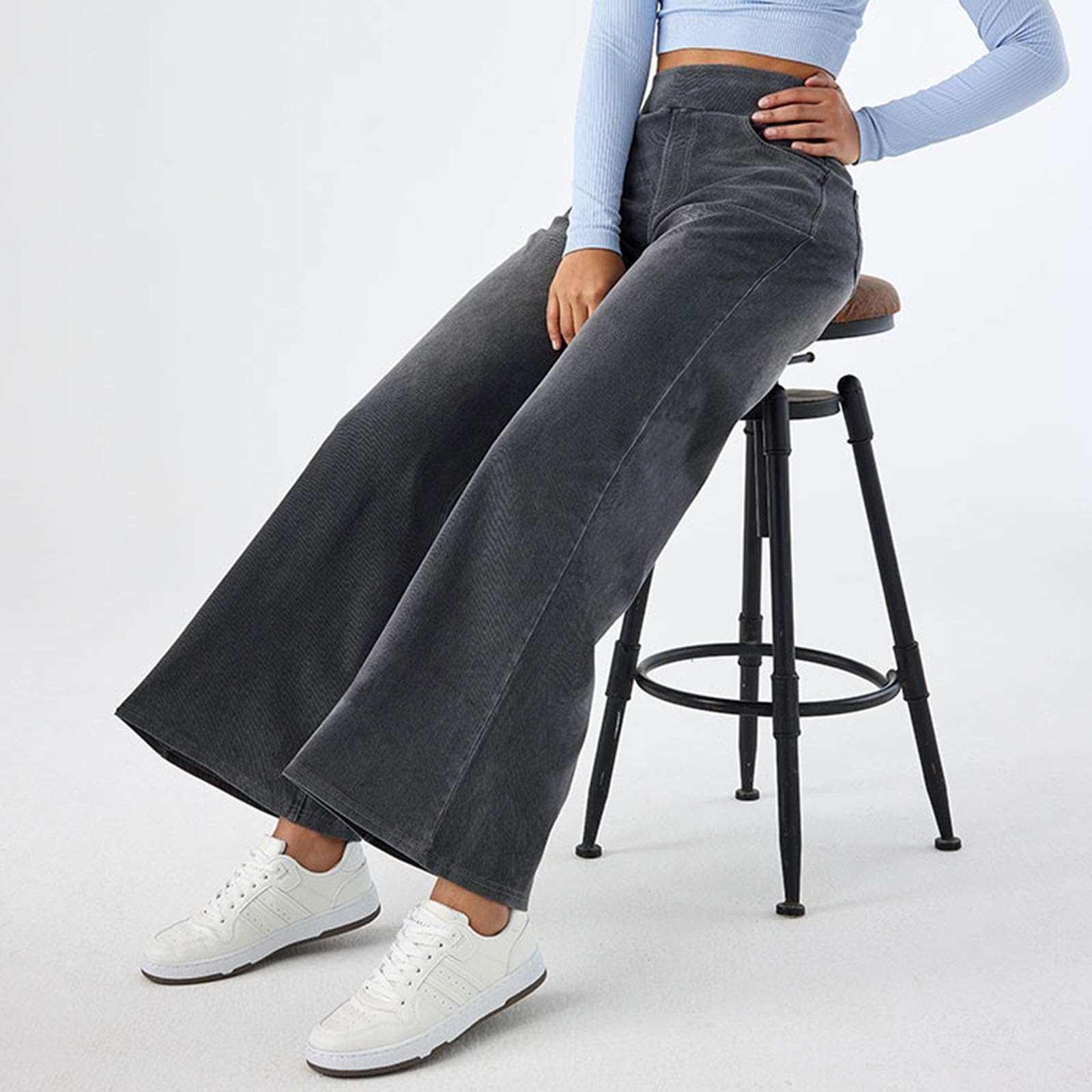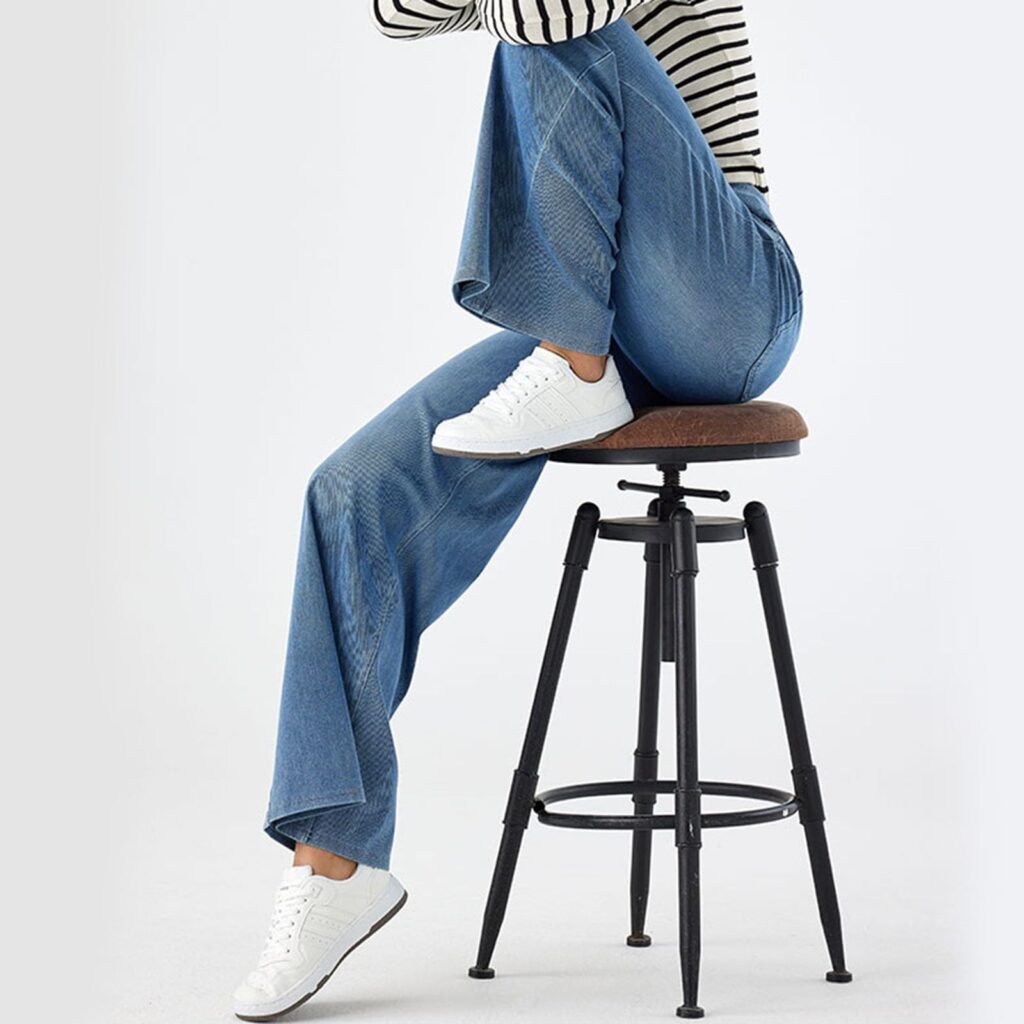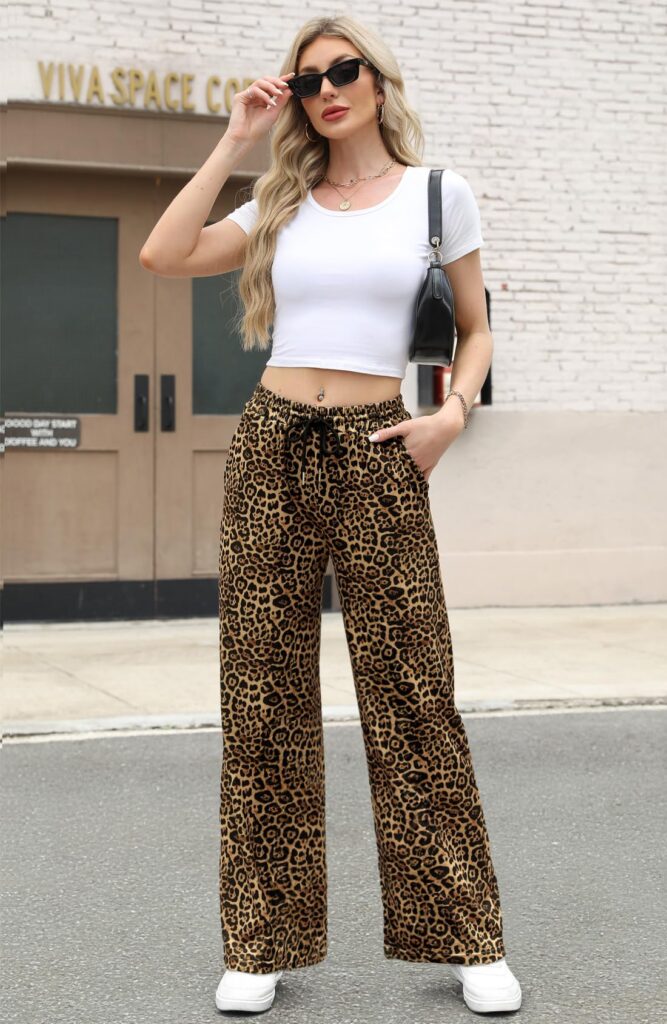Address
304 North Cardinal
St. Dorchester Center, MA 02124
Work Hours
Monday to Friday: 7AM - 7PM
Weekend: 10AM - 5PM
Address
304 North Cardinal
St. Dorchester Center, MA 02124
Work Hours
Monday to Friday: 7AM - 7PM
Weekend: 10AM - 5PM


Sweatpant jeans (also called denim joggers or denim sweatpants) are a hybrid casual pant style that combine the look and structure of traditional jeans with the soft, stretchy construction of sweatpants. In essence, they appear like denim on the outside but are built like a knit pull-on pant. As one style guide notes, “sweatpant jeans” are “a hybrid style promising the structure of denim with the comfort of loungewear”. Apparel professionals describe them as merging the aesthetic of five-pocket jeans with a knit waistband and elastic stretch fabric. This fusion delivers a polished denim look (seams, faux fly, belt loops, etc.) while feeling as soft and flexible as joggers.
Figure: A denim-look jogger (men’s style) exemplifies sweatpant jeans – it has the silhouette of a jean pant but uses a stretchy knit fabric and elastic waistband. Apparel developers often use cotton-blend knits (such as French terry or brushed fleece) dyed to mimic indigo denim, or knitted “denim” fabrics (cotton/polyester with elastane) to achieve this effect. For example, one denim-knit interlock is 83% cotton, 15% polyester, 2% Lycra, giving it a “classic denim look” but over 25% four-way stretch. In practice, sweatpant jeans usually contain significant elastane/spandex (often 5–15%) so the fabric stretches and recovers, preventing bagging. The knit construction (French terry or fleece) is brushed inside for softness, and often milled at a mid-to-heavy weight (e.g. 8–10 oz) to hold a structured drape. To balance the denim appearance with comfort, designers may add polyester (for durability and easier wash) and a touch of spandex (for elasticity and shape retention).

Sweatpant jeans offer clear comfort advantages. The knit inside (brushed terry or fleece) feels plush against the skin, and the stretch allows easy movement (sitting, bending, even jogging) without binding. Unlike rigid denim, there is no break-in period – even strong seams or prints feel smooth. Many users report they can “spend hours in these without feeling stiff”. For active and travel use, some brands even blend technical fibers: Dish & DU/ER’s jogger-jeans use a moisture-wicking Coolmax yarn and a knit structure for breathability, plus a drawstring and cuff in true sweatpant fashion. This means sweatpant jeans can handle casual workouts, commuting or outdoor tasks more comfortably than true denim, while still appearing polished.
From a fashion standpoint, sweatpant jeans deliver versatility. They can be styled like any dark-wash jean – paired with blazers or tees – yet feel as cozy as loungewear. That makes them ideal for remote work, travel or weekend outings. Retail developers note that “comfort is crucial… but so is feeling put-together,” and sweatpant jeans satisfy both. In kids’ lines, they become a practical compromise: children get denim-like bottoms (with the look of jeans) without the sensory issues of stiff denim. In one review a parent noted special-needs children “refuse to wear jeans so this is an amazing compromise – all the style with none of the feel” of conventional denim.
In summary, sweatpant jeans are knit trousers engineered to look like denim. They use cotton-blend fleece or French terry (often garment-dyed or pigmented to “fake” denim color) with added spandex, plus an elasticated draw-waist. Design features mimic jeans (rivet prints, five-pocket cut, belt loops) but construction is simpler (pull-on, no zipper). Compared to jeans, they offer greater softness, stretch and easy wear; compared to sweatpants, they offer a dressier, structured appearance. For apparel sourcing, this category fits into the growing hybrid casual/athleisure market. Suppliers and developers should note the importance of balanced fiber blends (to ensure wash durability and desired handfeel) and stable knit structures (to avoid excessive sagging). Many retailers now use recycled content in these fabrics (e.g. 10–15% recycled polyester) to improve sustainability.
For global buyers and sourcing teams, understanding sweatpant jeans means recognizing them as a fusion of denim and sweatshirt pant technology. These garments typically use ring-spun cotton jersey or fleece (often 90%+ cotton with polyester/elastane) knit on circular or warp-knits, and finished with denim-like surface treatments. By leveraging knitwear production (looms or circular knitting) rather than traditional denim weaving, manufacturers can offer comfort-focused bottoms that still satisfy the fashion demand for a jean-like look. This hybrid approach has expanded into both adult and children’s lines, reflecting a major trend toward versatile, performance-oriented casual wear.
Sources: Industry and product descriptions of sweatpant-jeans detail their blended construction and styling, confirming they mix denim aesthetics with sweatshirt fabric properties for comfort and ease of movement. These references illustrate the fabric blends (cotton/poly/spandex terry knits) and design features (elastic waists, faux flies) that define the sweatpant-jeans category.